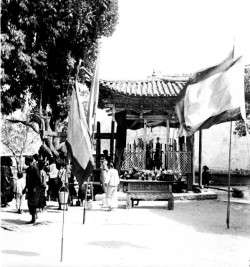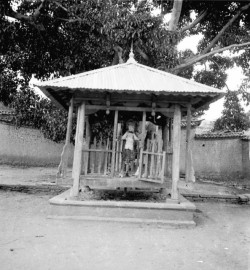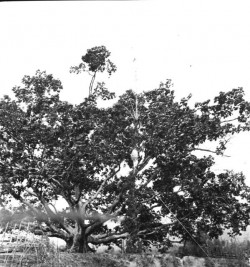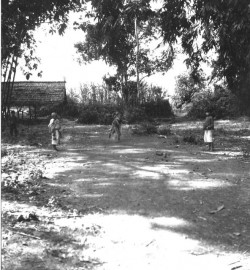TELDAP Collections
| Harmonious Interaction between Human Beings and Natural Environment—Offering Ceremonies |
|
Offering ceremonies display how people live and act according to the seasons of a year. These ceremonies also reveal the harmonious interaction between human beings and the natural environment. Aborigines, who traditionally subsisted on farming, fishing, and hunting, believed that the success of these activities relied on te blessings from spirits of gods and ancestors. Therefore, offering ceremonies were held to pray for these blessings. Offering ceremonies show the cultural essence of the beliefs, social organizations, traditions, and taboos of each tribe. In the past, millet was the staple crop for indigenous people in Taiwan. Millet was traditionally regarded as a sacred symbol and was highly regarded. As a result, complicated ceremonies were held during all activities from sowing to harvesting. These ceremonies include the sowing ceremony, weeding ceremony, harvesting ceremony, depository ceremony, and several others. In addition to agricultural ceremonies, each tribe had its own ceremonies according to their own natural environment. Hunting was an important livelihood for tribes who lived on high mountains. The ear shooting ceremony of the Bunun and the great hunting ceremony of the Puyuma were held for such purposes. While the Amis, who lived on the seaside, had river and sea ceremonies and the Tao had the flying fish ceremony. These ceremonies reveal the traditional lives of each tribe. Beliefs in the spirits of ancestors and historical traditions of indigenous people can be seen through the five-year ceremony of the Paiwan, the Maho ceremony of the Atayal, and the dwarf spirit ceremony of the Saisiyat.
Minority ethnic groups in southwest China live in a similar natural environment like that in Taiwan. Many live on the efforts of farming, fishing, and hunting. As a result, they have similar ceremonies to those of the indigenous people in Taiwan. Compared with the indigenous people in Taiwan, minority ethnic groups in China have been heavily influenced by Han culture for more than two thousand years. Offering ceremonies such as the Buddha Washing Festival of the Dai and the Redeeming Wishes Festival of the Miao have been heavily influenced by Buddhism and Han culture.
The traditional life styles of indigenous people and minority ethnic groups have changed along with the times. Many offering ceremonies have been held by the government for the purpose of cultural tourism. Indigenous people have endeavored to preserve their traditional culture and ceremonies are held to symbolize ethnic and cultural identification. Tourists who attend the ceremonies will be touched by longings for the traditional culture demonstrated in ceremonies through the singing and dancing of the indigenous people in Taiwan who struggle between traditional and contemporary life.
The following links on human rituals are for your reference:
Comprehension and Manifestation of Culture— Human Rituals
Stages of Life—Rites of Passage Supernatural Promises—Clearing Up Disasters and Praying for Blessings
Symbolic Figures and Objects in Rituals
Harmonious Interaction between Human Beings and Natural Environment— Offering Ceremonies Collections
Buddha's Washing Pavilion in Buddha Temple
Getting Water on the Eve Before Buddha's Washing
Buddha's Washing
Buddha's Washing Pavilion
Flowers and Trees Planted Outside the Camp After Buddha's Washing
Monks Play Tops in Buddhist Temple
Women Playing Swings
Men Playing Tops
|



















